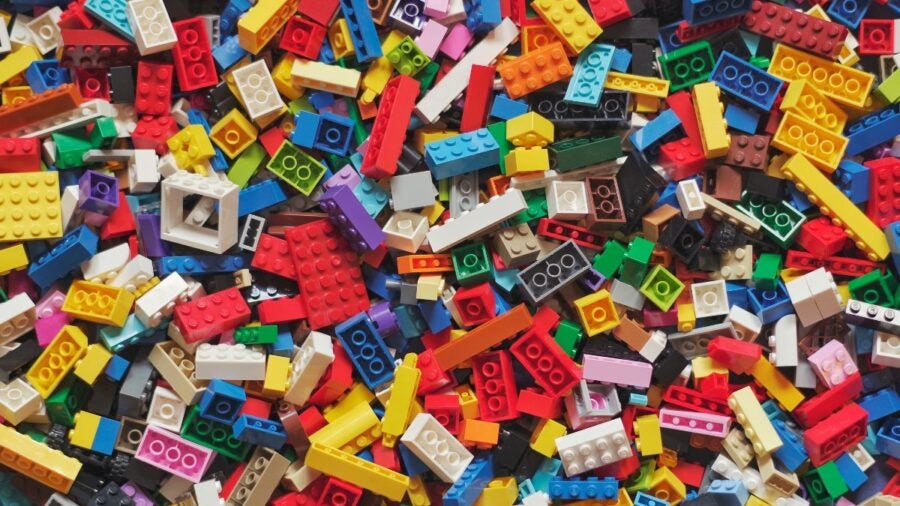
Lego recently revealed that it had abandoned a scheme to make its bricks out of recycled plastic bottles. The Danish toy maker had hoped to start using the supposedly more sustainable raw material this year, but it found from its experiments that the modified production process would have emitted more carbon dioxide than it would have saved.
Speaking to the FT, Lego’s head of sustainability, Tim Brooks, explained that “the level of disruption to the manufacturing environment was such that we needed to change everything in our factories. After all that, the carbon footprint would have been higher. It was disappointing.”
Some of the firm’s other attempts to adopt greener materials in recent years have proved successful. It has begun replacing plastic packaging with paper, for instance, and it’s been using a bioplastic sourced from sugar cane in certain bricks since 2018. Yet its “bottles to bricks” initiative may well live longer in the memory for being abortive.
“This is the nature of innovation, especially when it comes to something as complex and ambitious as our sustainable materials programme,” Lego said in a statement. “Some things will work, others won’t.”
What can businesses learn from Lego’s experience?
Other companies would do well to view the failed scheme as a case study. Lego’s experience shows that, although certain changes might seem more sustainable at first sight, the complex nature of supply chains can obscure their true impact.
Mauro Cozzi is the co-founder and CEO of carbon footprinting platform Emitwise. He points out that “what sometimes sounds like the more sustainable option is not always one that reduces emissions. That’s because carbon footprints are inherently convoluted, with several factors at play. The tiniest changes in one of these factors can tip the entire outcome in a different direction.”
It’s important to conduct a full impact assessment of any planned sustainability initiative to assess its potential negative effects. While many companies have a good grasp of their direct impact on the environment, their scope-three greenhouse gas emissions, which include those generated by suppliers and consumers, are harder to measure.
What sometimes sounds like the more sustainable option is not always one that reduces emissions
This is problematic, because the lion’s share of most firms’ emissions falls under scope three. Take Lego, for instance: 98% of its total attributable emissions are generated in the supply chain.
Jose Arturo Garza-Reyes is professor of operations management and head of the University of Derby’s Centre for Supply Chain Improvement. He believes “it’s important that businesses take a holistic view of sustainability, just as Lego is doing. Sustainability and the reduction of carbon emissions don‘t always have a direct and positive correlation.”
Garza-Reyes continues: “Various factors – including rebound effects (increased consumption resulting from actions that increase efficiency and reduce consumer costs), technological limitations, supply chain complexities, indirect emissions and regional differences – may mean that ‘sustainable alternatives’ don’t have the desired impact.”
Given that a company tends to have little direct control over its scope-three emissions, it can find them difficult to reduce. This factor can also make it harder for a firm to gauge which operational changes would have the most beneficial effect overall.
“To build more environmentally friendly products, companies should factor in supply chain and consumer use emissions,” Garza-Reyes says. “These span the entire product lifecycle, including processes such as the extraction of raw material, customer use and disposal.”
Changes to sustainability legislation
From next year, amendments to the EU’s corporate sustainability reporting directive (CSRD) will start requiring certain businesses to disclose their scope-three emissions. The new obligation is set to apply to more than 50,000 companies, including some British firms operating in the single market.
“Adding supply chain and consumer use emissions helps businesses to recognise their true carbon impact, which allows them to make more accurate representations of their progress in carbon reduction,” Cozzi says. “This is exactly why regulations such as the CSRD require businesses like Lego to disclose these emissions.”
Updates to the UK Competition and Markets Authority’s rules concerning greenwashing add to the complexity that businesses must handle as they strive to become more sustainable.
“Having the right data to make informed, practical decisions is crucial,” Cozzi notes. “Such data has enabled Lego to avoid becoming a victim of greenhushing.”
As Lego’s experience shows, businesses must understand their products‘ lifetime impact on the environment if they‘re to achieve meaningful progress towards sustainability.

Lego recently revealed that it had abandoned a scheme to make its bricks out of recycled plastic bottles. The Danish toy maker had hoped to start using the supposedly more sustainable raw material this year, but it found from its experiments that the modified production process would have emitted more carbon dioxide than it would have saved.
Speaking to the FT, Lego’s head of sustainability, Tim Brooks, explained that “the level of disruption to the manufacturing environment was such that we needed to change everything in our factories. After all that, the carbon footprint would have been higher. It was disappointing.”
Some of the firm’s other attempts to adopt greener materials in recent years have proved successful. It has begun replacing plastic packaging with paper, for instance, and it’s been using a bioplastic sourced from sugar cane in certain bricks since 2018. Yet its “bottles to bricks” initiative may well live longer in the memory for being abortive.
